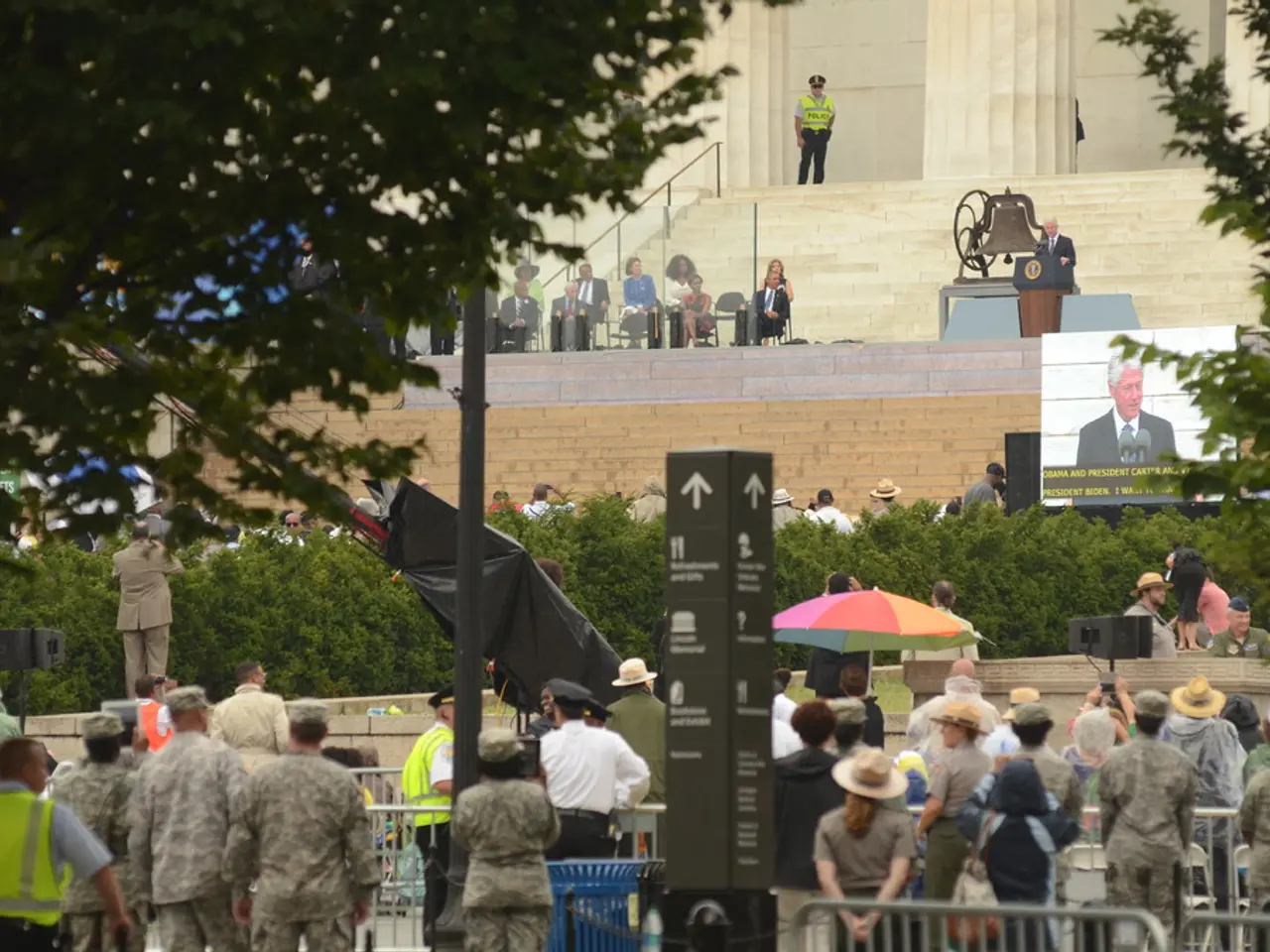Deepfake detection tools using artificial intelligence for political campaigns becoming a significant development
In the digital age, deepfakes - manipulated audio or video clips created using artificial intelligence - pose a significant threat to the integrity of election systems. They can spread misinformation, manipulate voter perception, and undermine trust in democratic institutions. However, a new line of defense is emerging: AI-based deepfake detection tools.
These tools work by analyzing videos and images for subtle inconsistencies and manipulations that are hard for humans to spot. Advanced systems like the Universal Network for Identifying Tampered and synthEtic videos (UNITE) go beyond detecting simple face swaps; they examine full video frames, including backgrounds, motion patterns, lighting inconsistencies, and other subtle cues to identify synthetic or doctored content.
Techniques include AI forensic analysis that looks for anomalies in facial micro-expressions, shadows, and even behavioral patterns that don't match expected real-world conditions. Some detection approaches also use watermarking, provenance tracking, hardware-based media authentication, and liveness detection to verify authenticity.
The role of these AI detection tools is critical, especially in political campaigns. They help expose fake media before it can influence public opinion or be weaponized. Detection technologies assist journalists, fact-checkers, platforms, and regulators to identify and mitigate disinformation campaigns based on deepfake media.
Governments worldwide are responding with legislation that requires labeling synthetic content and criminalizes malicious creation and distribution of deepfakes, especially in political contexts. This synergy of AI detection and policy aims to safeguard democracy and public trust against the evolving threat of AI-generated deepfakes.
AI-based deepfake detection tools can be integrated into campaign apps or dashboards to feed alerts into campaign monitoring systems or media war rooms for fast decision-making. They can also help political campaigns customize their messaging to different groups of voters by analyzing data like voting patterns, past behavior, demographic information, and social media content.
AI-based deepfake detection tools are being hailed as the next big thing in politics, offering a faster, more efficient, and objective way to monitor and obstruct deepfakes. Tools like Microsoft Video Authenticator, Deepware Scanner, Sensity AI, and Reality Defender are already being used for political media verification.
Deep trace, a market-leading AI-based deepfake detection tool, uses an intelligent algorithm to analyze light, color, and size to identify manipulated media. AI-based deepfake detection tools can help political candidates protect their reputations and ensure they are not victims of fake videos, and take proactive measures to debunk deepfakes created by opponents.
AI-based deepfake detection tools are being developed to cope with this threat, allowing political campaigns to detect deepfakes and take action to prevent them from circulating. They enable real-time monitoring of vast amounts of data related to political campaigns, such as social media mentions, public opinions, and news articles.
MIT's algorithm for deepfake detection uses scrutiny from various eyes to check for tampering and creates a heat map of suspected high-risk areas. AI-based detection tools can help political campaigns reduce the impact of deepfake propaganda on social media and limit how it affects democracy.
AI-based deepfake detection tools can help politicians protect their public image from deepfakes by securing digital assets, using blockchain-based content verification, and issuing fast, public clarifications when misinformation arises. They can help identify potential problem areas for a campaign by analyzing public sentiment, polling data, and social media conversations.
As we move forward, the use of AI-based deepfake detection tools in political campaigning is still in its early stages, but it is becoming increasingly essential. These tools offer a powerful solution to the growing problem of deepfakes, safeguarding the integrity and credibility of political campaigns, facilitating trust and building confidence in the election system.
- In the digital age, deepfakes pose a significant threat to the integrity of election systems by spreading misinformation and undermining trust in democratic institutions.
- AI-based deepfake detection tools work by analyzing videos and images for subtle inconsistencies and manipulations that are hard for humans to spot.
- Technology like the Universal Network for Identifying Tampered and synthEtic videos (UNITE) examines full video frames to identify synthetic or doctored content.
- Detection tools are critical in political campaigns as they help expose fake media before it can influence public opinion or be weaponized.
- These AI detection tools assist journalists, fact-checkers, platforms, and regulators to identify and mitigate disinformation campaigns based on deepfake media.
- As we move forward, the use of AI-based deepfake detection tools in political campaigning is becoming increasingly essential, offering a powerful solution to the growing problem of deepfakes, safeguarding the integrity and credibility of political campaigns.




